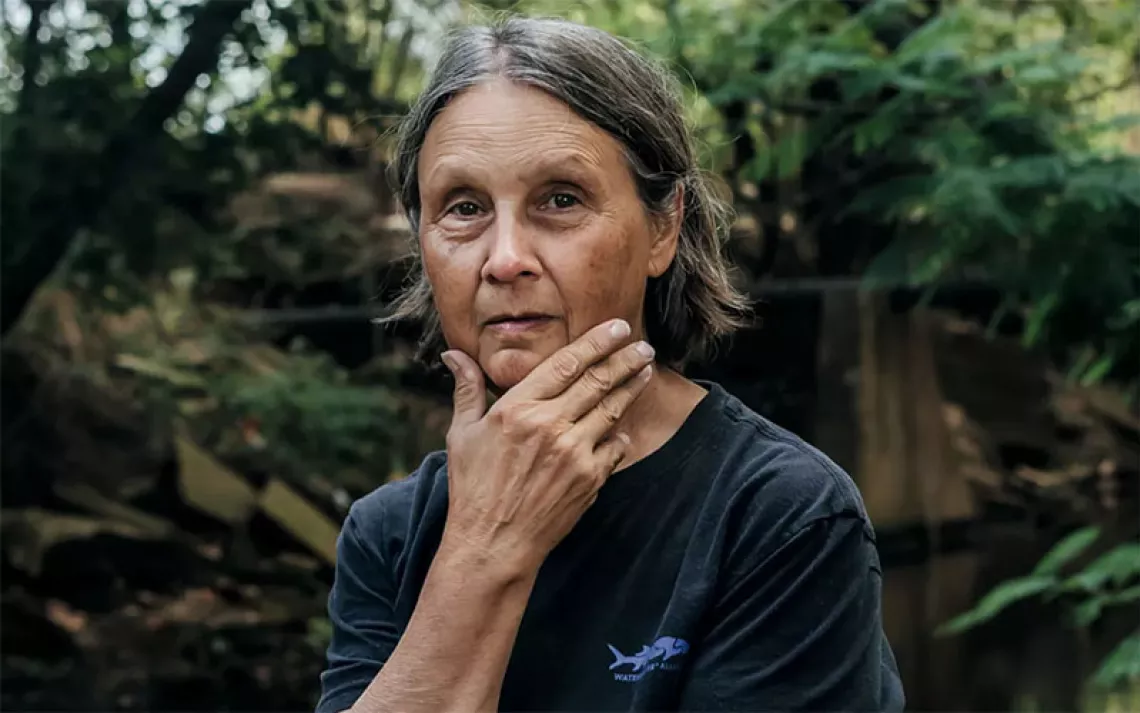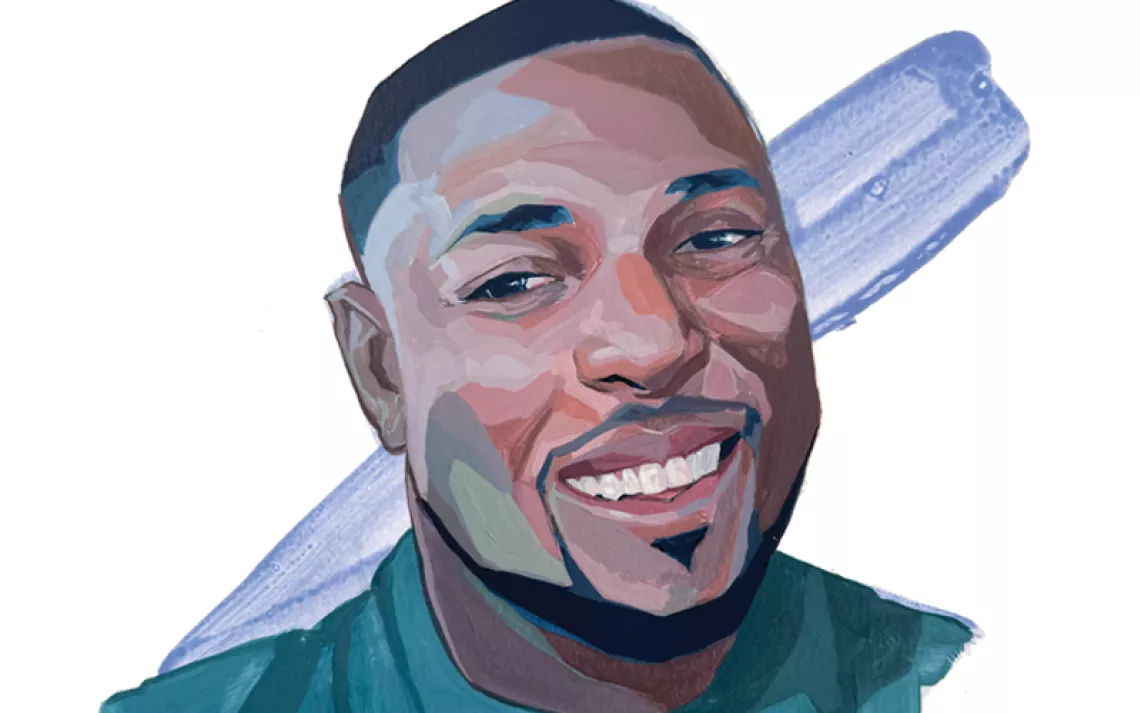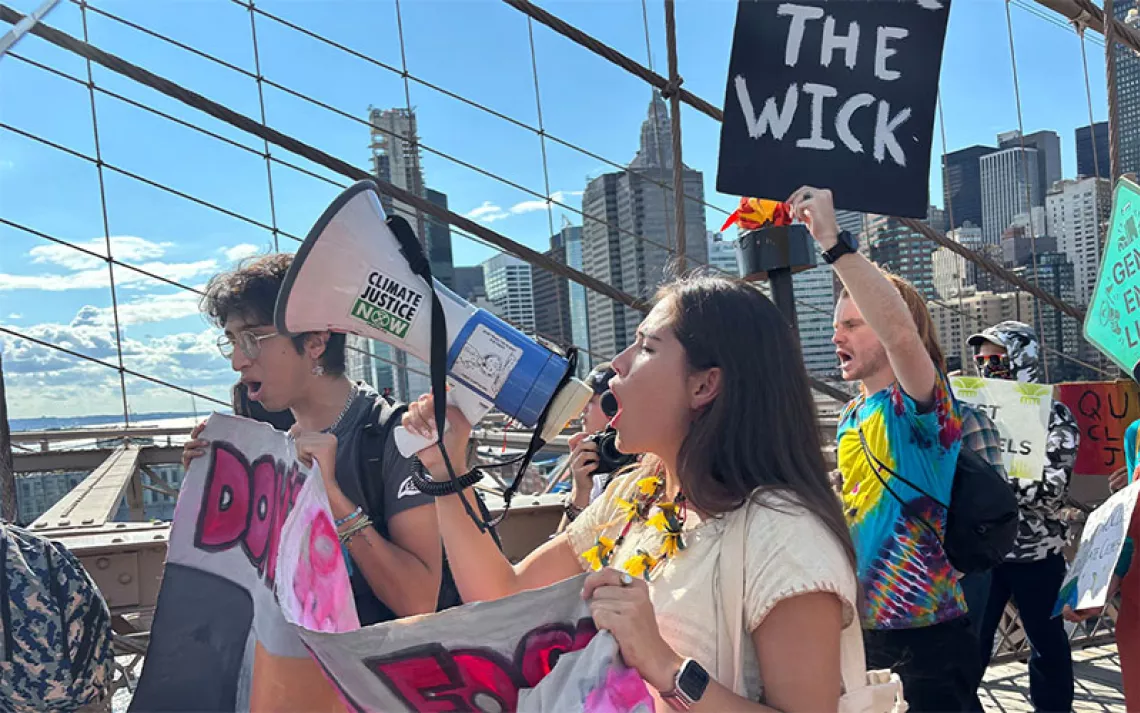Environmental Women
A syllabus of scientists, activists, and writers to read more about
Today is the birthday of Rachel Carson, a marine biologist and ecologist who became one of the most well-known environmentalists in U.S. history. Her book Silent Spring earned her a well-deserved place on the reading list for many an environmental studies course. But she's not the only woman who deserves to be there. In honor of Carson's birthday, here’s a list of essential reading about her and several other trailblazing environmental thinkers who also happen to be women.
Rachel Carson
Carson was working as an editor for the U.S. Fish and Wildlife Service when she wrote her incredible trilogy of books about the ocean: Under the Sea-Wind, The Sea Around Us, and The Edge of the Sea. In these books, written in the 1950s, she theorized about climate change, melting glaciers, and rising sea levels—current events far from theoretical now.
But it was Silent Spring, published in 1962, that established a nationwide zeitgeist. The book detailed the harmful effects of chemical pesticides like DDT during the ramp-up of development after WWII. Before the EPA, the USDA regulated pesticides and addressed environmental concerns, a conflict of interest that Carson brought to light. The book prompted a nationwide ban on DDT and other pesticides and, ultimately, the creation of the Environmental Protection Agency in 1970, six years after her death. “One way to open your eyes is to ask yourself what if I had never seen this before?” Carson wrote in The Sense of Wonder. “What if I knew I would never see it again?”
Required reading: Jill Lepore’s essay about Carson in the New Yorker.
“Carson came to see the world as beautiful, wild, animal, and vulnerable, each part attached to every other part, not only through prodigious scientific research but also through a lifetime of caring for the very old and the very young, wiping a dying man’s brow, tucking motherless girls into bed, heating up dinners for a lonely little boy.”
Wangari Maathai
Wangari Maathai started the Green Belt Movement in 1977, six years after becoming the first East African woman to receive a PhD. The movement organized seminars in environmental education, fought deforestation, and hired local women to plant trees and restore greenbelts throughout Kenya.
Maathai was a 2004 Nobel Peace Prize recipient, and before her death from ovarian cancer in 2011, she founded the Wangari Maathai Institute for Peace and Environmental Studies at the University of Nairobi.
Essential reading: Wangari Maathai’s memoir Unbowed.
“There are opportunities even in the most difficult moments.”
Faith Spotted Eagle
Faith Spotted Eagle once exclaimed, "Women are nurturers, but they are also Mother Bears, ready to defend the land and water." She played a critical role in the ongoing opposition to the construction of Keystone XL and Dakota Access oil pipelines.
Before her environmental work, she organized with the Coalition of Indian Controlled School Boards in Denver, Colorado, for the return of native control of schools on tribal land. She currently works as a trained mediator, incorporating traditional methods of peacemaking, and is the coordinator of the Brave Heart Society, reviving traditional cultural knowledge into everyday practices.
Required reading: This interview with Faith Spotted Eagle produced by the Indian Country Media Network, on what it was like to defend tribal lands from the Keystone XL pipeline.
“Men who are digging and fracking in the earth are in a state of domestication by oil companies and their need for money. Capitalism is their god, and it takes no prisoners.”
Sylvia Earle
Sylvia Earle is the first woman to serve as chief scientist at the National Oceanic and Atmospheric Administration, and the first to lead an all-female team of aquanauts on a two-week mission to explore and live completely underwater near the Virgin Islands. From early on in her career in the 1980s, she has raised awareness of the harms of overfishing and pollution in the world’s oceans. She is an expert on the impact of oil spills, an aficionado of algae, and a National Geographic explorer. Her current project, Mission Blue, is a campaign to create a global network of protected marine areas.
Essential reading: Ian Frazier’s profile of Earle in Outside.
“She is like a super-apex sea creature that has somehow wound up on dry land and is walking around and telling everybody about the terminal ruin humans are inflicting on her home.”
The Chipko Movement
The Chipko movement started in the early 1970s, when villagers in northern India, many of them women, began to protest the destruction of forests in the area. For village women, in particular, the ecological balance of the forest provided a livelihood in a way that logging did not. In 1973, villagers used direct action against commercial logging near the small enclave of Gopeshwar. A hundred women and workers rallied at the site, forcing the loggers out of the area. The Chipko movement’s direct, local action paved the way for more recent fights against deforestation in West Bengal.
More reading: Thomas Weber’s Hugging the Trees: The Story of the Chipko Movement.
“In order to give people the courage to fight for their trees, Chipko leaders fasted and recounted the story of previous actions where hardship and overwhelming odds were overcome in the battle for trees.”
Lois Gibbs
Lois Gibbs was mad as hell in 1978 after she found out her son’s elementary school in Niagara Falls, New York, was built on a toxic-waste dump. Gibbs rallied the Love Canal Homeowner’s Association and brought worldwide attention to the Love Canal environmental crisis. The pressure they brought contributed to passing the Comprehensive Environmental Response, Compensation and Liability Act of 1980 (CERCLA), which established the Superfund program to clean up contamination sites of hazardous substances and pollutants. Over 800 families were evacuated from the site and relocated, and a Superfund cleanup ended with the partial demolition of the neighborhood in 2004. Gibbs founded and continues to work at a nonprofit that trains local activists with their environmental work. She was awarded the Goldman Environmental Prize for her work in 1990.
Required reading: This Washington Post profile of Gibbs, on the 20th anniversary of the Love Canal disaster.
“The woman they call 'Mother of the Superfund' birthed more than legislation. Gibbs's spirited and very public campaign catapulted industrial waste hazards to national attention.”
Eileen Kampakuta Brown and Eileen Wani Wingfield
Aboriginal elders Eileen Kampakuta Brown and Eileen Wani Wingfield fought the Australian government’s plans to bury waste from a Sydney nuclear reactor in their desert homeland in southern Australia. In 1995, Brown, Wingfield, and other elder women formed the Kupa Piti Kungka Tjuta Cooper Pedy Women’s Council, or Kungka Tjuta, to stop the plan. They visited government officials and protested at the Olympic games in Sydney. After their campaign, almost 90 percent of South Australians polled opposed the construction of the dump. Unfortunately, the Australian government continues to plan radioactive dump sites on Aboriginal land.
Required reading: Elders: Wisdom From Australia’s Indigenous Leaders by Peter McConchie.
“My Grandmother and Mother looked after the land, that was their Manta (Earth). Now I am talking on behalf of them, so that the kids can have it behind when we leave it.”
Marjory Stoneman Douglas
Called the “Grande Dame of the Everglades,” Marjory Stoneman Douglas extended a public relations campaign to portray the Florida Everglades as a national treasure instead of a useless swamp. A lifelong writer of fiction and nonfiction, her story “Wings,” about poaching Everglades wading birds for their feathers, appeared in the Saturday Evening Post in 1931, while her book The Everglades: River of Grass dove deep into the natural history of the Everglades and its threats from development. She lived to be 108 and died in 1998.
Essential Reading: Voice of the River, Stoneman Douglas’s autobiography.
“You have to stand up for some things in this world.”
Berta Cáceres
Berta Cáceres caused an international environmental sensation in 2013 when she and other Honduran organizers halted the Agua Zarca Dam project at Gualcarque River. Cáceres, though, saw herself as an indigenous rights activist. She cofounded the Council of Popular and Indigenous Organizations of Honduras (COPINH) with the goal of helping indigenous people keep their lands from logging, dams, and other kinds of development.
Frequently intimidated by the military during protests, Cáceres understood that her work put her name on a hit list to “eliminate any opposition.” In 2015, she was awarded the Goldman Prize for her work with the Lenca people. Her legacy is amplified by her deplorable assassination in 2016. Currently, Honduras has the highest number of murders of environmental and land defenders in the world. Cárceres’s death is a symbol of the danger to those who speak out against environmental degradation in Latin America and the courage of those who do.
Required reading: A report in the New Yorker shortly after Cáceres’s death, and Sierra magazine’s investigation into the cause of her murder.
“She could empathize and spar with humble people, he told me, telling jokes and stories ‘with the same smile as always.’ But when she was in front of the police or the military, he said, she grew big—speaking firmly, elevating her voice with strength. She was like a machine gun. She would finish talking to the authorities who opposed the community and then return to the people. She would go back to being Berta.”
 The Magazine of The Sierra Club
The Magazine of The Sierra Club




